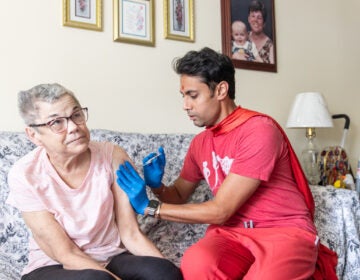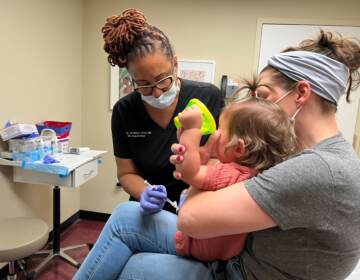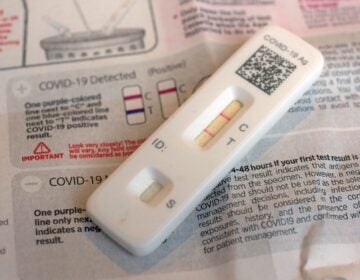See the curve: Pa. coronavirus daily death count hits new high as spread slows
As the state's daily death rate hits a high, experts are cautiously optimistic that social distancing measures are helping to contain the contagion.
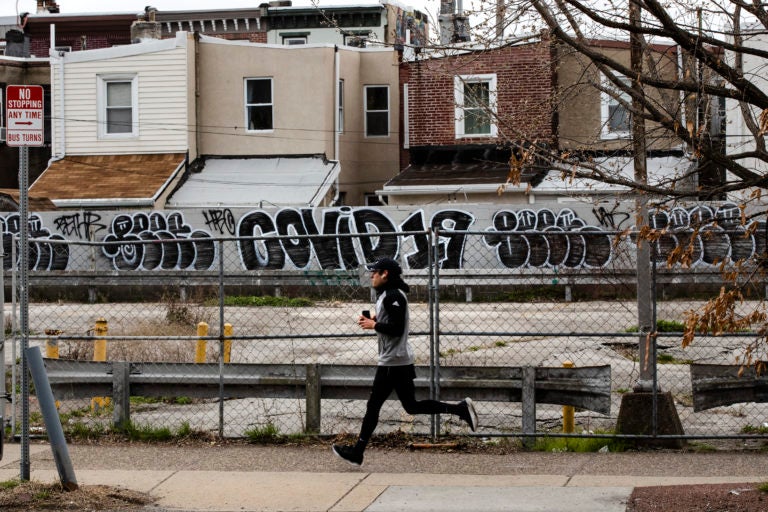
A jogger runs past a wall painted with the word "COVID 19" in Philadelphia, Wednesday, March 25, 2020. (AP Photo/Matt Rourke)
As daily deaths from COVID-19 reach an all-time high, the spread of new coronavirus cases in Pennsylvania is continuing to slow.
Experts are cautiously optimistic that social distancing measures are helping to contain the contagion, and that the Keystone State was at or near its peak, indicating progress toward recovery.
“There does appear a slowing of cases and deaths, which is a good thing,” said Dr. Mark Roberts, director of the Public Health Dynamics Lab at the University of Pittsburgh. “But it’s not zero. And we haven’t necessarily hit the peak yet.”
Total cases increased by 54% over the past week, the smallest seven-day change in a month that saw the state descend into lockdown as the virus spread exponentially.
The number of new cases confirmed each day over the past week has fallen below the high watermark of 2,023 recorded on April 10.
Meanwhile, the 100 new Pa. fatalities reported on April 16 was the highest daily death count recorded to date. Epidemiologists generally expect such a spike in deaths to come after new diagnoses peak.
Roberts credited the swift response of Gov. Tom Wolf in enforcing an unprecedented and far-reaching shutdown order earlier than other governors.
Pa. still at risk of coronavirus rebound
Pennsylvania has fared better than neighboring states like New York and New Jersey, but it is not yet out of the woods, experts say. The state has already blown past earlier death projections by nearly double.
“You can’t say everything is fine. The virus hasn’t changed. It’s still out there,” Roberts said. “Our behavior has changed, the fact that we’re socially distancing. If life goes back to normal again too quickly, there could easily be a rebound.”
While New York Gov. Andrew Cuomo extended the state’s stay-at-home order on Thursday through May 15, Wolf said the state has no plans to extend its stay-at-home order, which lasts through the end of April.
Yet even as revised projections still put the state a few days away from a peak in deaths, Republican legislators in the General Assembly have pushed legislation eroding aspects of the shutdown in order to hasten a reboot of the state economy.
Some elected officials have continually questioned statewide public health orders for a virus that, to date, has seen cases clustered in more populous regions of the state even as more rural areas are battered economically.
“Just shutting down the state completely, especially in areas where there are no major outbreaks, doesn`t make sense,” Pa. Sen. Doug Mastriano (R-33) told Fox 43 in late March.
But Roberts said it was still unclear if rural Pennsylvania had dodged the worst of the virus or was simply lagging a few weeks behind other areas, adding that these areas had far fewer medical facilities to handle even small outbreaks.
“It’s true that it’s easier to maintain social distancing in rural Pennsylvania than in the middle of Philadelphia,” he said. “But they have different medical capacity in rural areas. And when people are seriously ill, they tend to transfer them to hospitals in Philadelphia, Pittsburgh or Harrisburg.”
Roberts said the post-peak crisis would increasingly hinge on untangling questions about how, exactly, to ease an entire state out of a pandemic.
Possibilities range from mass antibody testing to detect potential immunity to tiered systems of social distancing, he said. New data suggests that upwards of half of all Pa. fatalities occurred in nursing homes, raising hopes that quarantine restrictions could be eased for the general population, while maintained for the elderly and immunocompromised.
But Roberts added that these questions were made all the more difficult by a lack of testing and research. Medical experts are still unsure about the prevalence of asymptomatic spread or the accuracy of antibody testing, for example.
“Having millions out of work is a problem. Having people join ranks of those that are impoverished is a problem,” he said. “But the hope is we can find ways of reopening and relaxing social distancing in as safe a way as possible.”
WHYY is your source for fact-based, in-depth journalism and information. As a nonprofit organization, we rely on financial support from readers like you. Please give today.


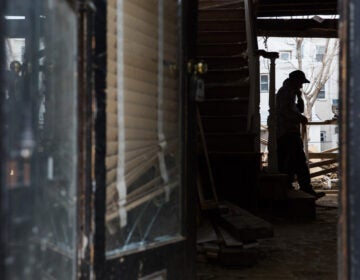
![CoronavirusPandemic_1024x512[1]](https://whyy.org/wp-content/uploads/2020/03/CoronavirusPandemic_1024x5121-300x150.jpg)
